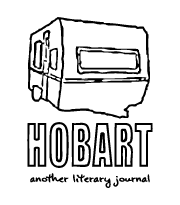On a short drive from Koreatown to Silverlake, I misread Melrose as Montrose on a street sign. It strikes me that I may never return to Montrose Avenue, the Chicago street on which I attended elementary school. In fact, it seems increasingly likely that to return to Montrose Avenue as I remember it is altogether impossible. The elementary school which is the same size as the post office beside it will never look as big as it did when I first saw it at five, or as small as it did when I last left it at fourteen.
Montrose, in my personal imagination, can never stretch as far as Melrose. In fact, Montrose Avenue runs 9.6 miles, dwarfing Melrose at a mere six. But I did not go to elementary school on Melrose. Melrose does not hold the Julius Meinl where I ordered my first latte, or the park (named for Ida B. Wells) to which our teachers brought me and my classmates on warm days. It holds neither the library where I completed summer reading challenges for stickers and t-shirts nor the diner at which I exclusively ordered spaghetti and meatballs.
Despite its proximity to the address on my driver’s license, Melrose is foreign in a way not remediable by driving up and down it, as I have done many times. The sense of my personal remoteness from the idea of Melrose, and of Montrose for that matter, stretches Chicago and Los Angeles thin across telephone wire, spitting out little fragments, little pulses of electricity. This, North Park Elementary. This, the Stories patio. This, my graduate apartment in Hyde Park. This, my 1930’s studio in Koreatown with the French windows. The other place is something one imagines, a specter in the corner of one’s vision. This is precisely the reason I can never return to Montrose Avenue. While I can imagine its traffic crawling through a honey afternoon, in reality the Julius Meinl is now closed, the elementary school now has a playground, and the library no longer holds summer reading contests. But from my room in Koreatown, a mountain road in Tujunga, or Malibu beach, Montrose and Melrose are equally remote.
The road beneath my tires runs through verdant stretches of mountain in a natural parallel, suggesting the two formed side by side. Telephone wires dip and rise like rare birds. On the other side of the guardrail, the ocean stretches past the borders of the world. Cragged rock reaches skyward, gaps in the green either burn scars or metamorphic bands.
At the end of the road is the Inn of the Seventh Ray, a restaurant with cult allegations, flower-clogged fountains, and string lights where I recently celebrated a one-year anniversary with the man I describe as “half my soul.”
The man who is half my soul does not believe in fate, and I am not sure that I do either. But in the card he presents me for the occasion, he notes that he has “seen fragments of [my] face in others, but never the full picture.” I think of Los Angeles in much the same way.
I think, then, of Chicago: the piston-pace of downtown, clean lines and grids. Downtown LA is a maze of stretched one ways spanning four lanes, cars parked in the middle of the street, human shit piled on sidewalks beside buildings that, at a glance, could easily belong to either place—brick and frieze. From downtown, at certain angles, Los Angeles could be mistaken for Chicago. Driving uphill in Silverlake, it is an alien planet. Los Angeles is fragmented, mosaicked around mountain roads that flow like rivers.
There’s a cockroach corpse, face up in the empty parking space next to mine when we return to my garage in Koreatown. The cockroach is being eaten by another cockroach. Before I moved to Los Angeles, I would have insisted on the perfection of this image as a metaphor for the city itself. Now, I think LA is more of a car crash: a catastrophe of color, sun, and freeway shoulders.
An accident on the 405-101 interchange meant I did not have a car in October of 2021. I depended on the Flyaway bus from Van Nuys to California State University: Northridge to attend the few in-person teaching credential courses which were held in those late tiptoe months. It was Halloween and I was dressed as Katniss Everdeen in an effort to amuse the class of seventh graders to whom I had just assigned The Hunger Games. Erin offered me a ride home.
Erin, a virtual stranger, drove 33.2 miles out of her way in rush hour traffic on Halloween to take me home. Because she was the funniest person I had ever met, Erin and I became friends and we attended several literary readings in Los Angeles together. I met Brittany at one in Silverlake. After Britt was almost killed by a semi-truck and Erin lost her own car to another accident entirely, the two co-founded the reading series Car Crash Collective, where I held the hand of the man who is half my soul for the first time. The same Car Crash Collective brought Erin to her own love, Alec. As I write this, she is 2,790 miles away.
Sitting on Malibu beach with Erin the day before we were due to begin our second year of teaching, her hair the color of midday sun, I thought of Chicago again, the inevitability of my leaving it. Of my being here, one year later, beside the man who is half my soul in the place it seems I have always thought of as home. The freeway crawls with traffic, ant-holed out from some far-flung accident, that broken glass which seems always to be shimmering on its edges.

